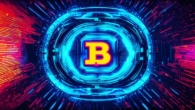
How do you make an NFT
The rise of non-fungible tokens (NFTs) has been meteoric, and their potential applications across various industries are vast. With a market value that surpassed $1 billion in 2021, NFTs have proven to be lucrative investments for creators and investors alike. However, creating an NFT can be a complex process, and many developers are unfamiliar with the intricacies of blockchain technology. In this comprehensive guide, we will explore the step-by-step process of making an NFT, including best practices and tips from industry experts.
What are NFTs?
Before we delve into the creation process, it’s essential to understand what NFTs are and how they work. NFTs are unique digital assets that can be bought, sold, and traded on blockchain networks. They are stored on a decentralized ledger, making them tamper-proof and verifiable by anyone with access to the network.
NFTs are often used to represent unique items such as art, music, videos, and collectibles. By tokenizing these assets, creators can monetize them through secondary sales, royalties, and other revenue streams. Additionally, NFTs have the potential to revolutionize industries such as gaming, sports, and real estate by creating unique in-game items, collectible cards, and virtual properties.
Step 1: Choose your Blockchain Platform
The first step in creating an NFT is to choose a blockchain platform that supports NFTs. The most popular platforms are Ethereum, Binance Smart Chain, Polygon, and Flow. Each platform has its unique features, such as transaction speed, gas fees, and smart contract capabilities.
When selecting a platform, consider the following factors:
* Transaction speed: Ethereum is the slowest platform with an average transaction time of 15 seconds, while Flow is the fastest with an average transaction time of milliseconds.
* Gas fees: Gas fees vary depending on the platform and network congestion. Ethereum has the highest gas fees, while Binance Smart Chain and Polygon have lower fees.
* Smart contract capabilities: Some platforms, such as Ethereum and Flow, offer more advanced smart contract capabilities than others. Consider the complexity of your NFT project and select a platform that can support it.
Step 2: Create a Digital Asset
The next step is to create a digital asset that will be tokenized as an NFT. This can be anything from a piece of art, music, video, or even a game item. The asset should be unique and have value to the intended audience.
* Uniqueness: Ensure that your asset is unique and cannot be replicated easily. This will make it more valuable and attractive to potential buyers.
* Value proposition: Determine what makes your asset valuable to the intended audience. Is it rare, exclusive, or has historical significance? Understanding the value proposition of your asset will help you set a fair price for the NFT.
* File format: Ensure that your digital asset is in a supported file format, such as JPEG, PNG, or MP4. Some platforms may have specific requirements for file formats, so check the documentation before proceeding.
Step 3: Tokenize Your Asset
The next step is to tokenize your digital asset on the chosen blockchain platform. This involves creating a smart contract that defines the ownership and transfer of the NFT. The smart contract should include details such as the asset’s metadata, ownership rules, and royalty payments.
* Metadata: Ensure that your asset’s metadata is accurately and comprehensively documented. This will provide potential buyers with information about the asset, such as its history, rarity, and value.
* Ownership rules: Define the ownership rules for your NFT, including how it can be bought, sold, and transferred. Consider implementing a buyback clause or a lock-up period to encourage long-term ownership.
* Royalties: Determine whether you want to receive royalties on secondary sales of your NFT. If so, specify the percentage and frequency of payments in the smart contract.
Step 4: Mint Your NFT
The final step is to mint your NFT on the chosen blockchain platform. This involves creating a unique digital representation of your asset on the blockchain and assigning it a unique identifier (NFT ID). The NFT ID will be used to track ownership, transfer, and other transactions on the blockchain.
* NFT ID: Ensure that your NFT ID is unique and cannot be duplicated. This will prevent any confusion or disputes over ownership.
* Marketing: Create a marketing plan to promote your NFT and attract potential buyers. Consider leveraging social media, influencer partnerships, and other marketing strategies to increase visibility and demand.

Best Practices for Creating an NFT
To ensure the success of your NFT project, consider the following best practices:
* Collaborate with experts: Work with experienced developers, designers, and marketers to create a high-quality NFT that meets industry standards and best practices.







